Attend an exclusive gala dinner at the Arsenal
Venice is accessible for everyone
With the right information and organisation
You might not expect to find “Venice” and “accessibility” in the same sentence, but the city is accessible provided visitors plan their trip properly. The city offers numerous accessibility services to make life easier for visitors with disabilities (and not only motor disabilities); but it’s important to gather information in advance and organise everything carefully.
I’ve spent years attending conventions, both in Italy and abroad, and listening to people say (sometimes rather snootily) that the city of Venice will never be accessible for people with disabilities.
Famous for its bridges – and infamous for the events regarding the Calatrava Bridge (and its mobility lift) – Venice is surprisingly accessible, thanks to the vaporetto waterbus transport system and to the ramps built over the bridges for the Venice Marathon. I visited the city for the Venice Boat Show, held at the beginning of June, the first event I physically attended after months of lockdown.

Train booked
From Ferrara, my family and I decided to take the regional train, booked well in advance given the restrictions on transport and assistance as a result of COVID.
When we arrived in Venezia Santa Lucia railway station, we headed for the ACTV local transport ticket point, right opposite the station, to buy our vaporetto tickets. We took line number 1 to go – via the Grand Canal – to San Marco Vallaresso, the accessible vaporetto stop that takes visitors to St Mark’s Square without steps – well, almost. Actv sailors are ready and willing to offer assistance to anyone requiring it for getting on and off the vaporetto, and if necessary, a ramp can be installed to bridge the step between the side of the canal and the waterbus. The day I was there, there was a person at the Santa Lucia railway station entrusted with offering assistance for getting on and off the vaporetto for anyone requiring it.
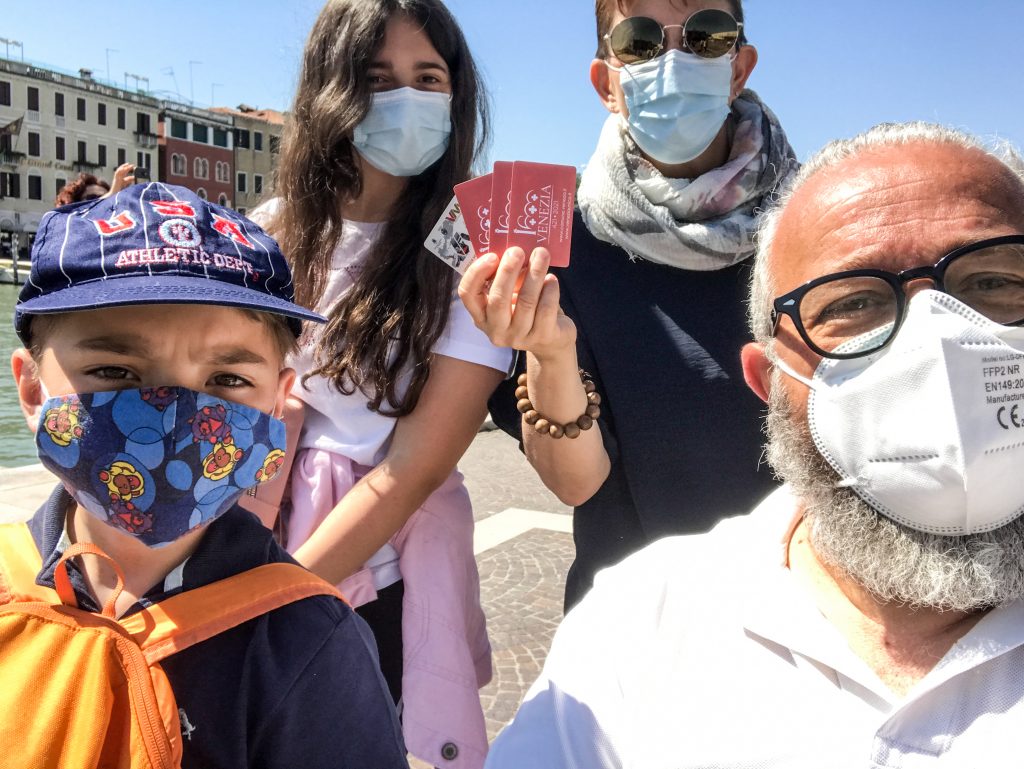
San Marco Vallaresso
We got off at the San Marco Vallaresso stop, and passed by the legendary Harry’s Bar, whose owner Arrigo Cipriani – as he explains in his book “Prigioniero di una stanza a Venezia” – is the only person in the world to be named after a bar. Unfortunately, the bar was closed; but if you want to visit it, bear in mind there’s a step about 15 cm high at the entrance.
At the end of Calle Vallaresso, if you need accessible bathroom facilities, you can take Sotoportego and Calle dei Preti, where you’ll find one of the city’s accessible public toilets. Take note: the entrance to the toilets is not accessible, but if you press the bell hard, someone will come and open the building next door where the accessible toilet is located.
Go right along Calle Vallaresso, then turn right into St Mark’s Square, where you’ll find the porticos; follow the one on the right to admire the prestigious shops and little art galleries displaying masterpieces of Venetian glassmaking.
I’ve always been drawn to Caffè Florian: not only is it the oldest coffeehouse in Italy, and indeed the world, dating to 1720, but the mini orchestra that entertains patrons with its musical accompaniment creates a truly special atmosphere. It was in these places and in this square that Giacomo Casanova courted his ladies – and let’s not forget it was also a haunt of figures of the calibre of Goethe and Hemingway, to mention but two of the most renowned travellers.
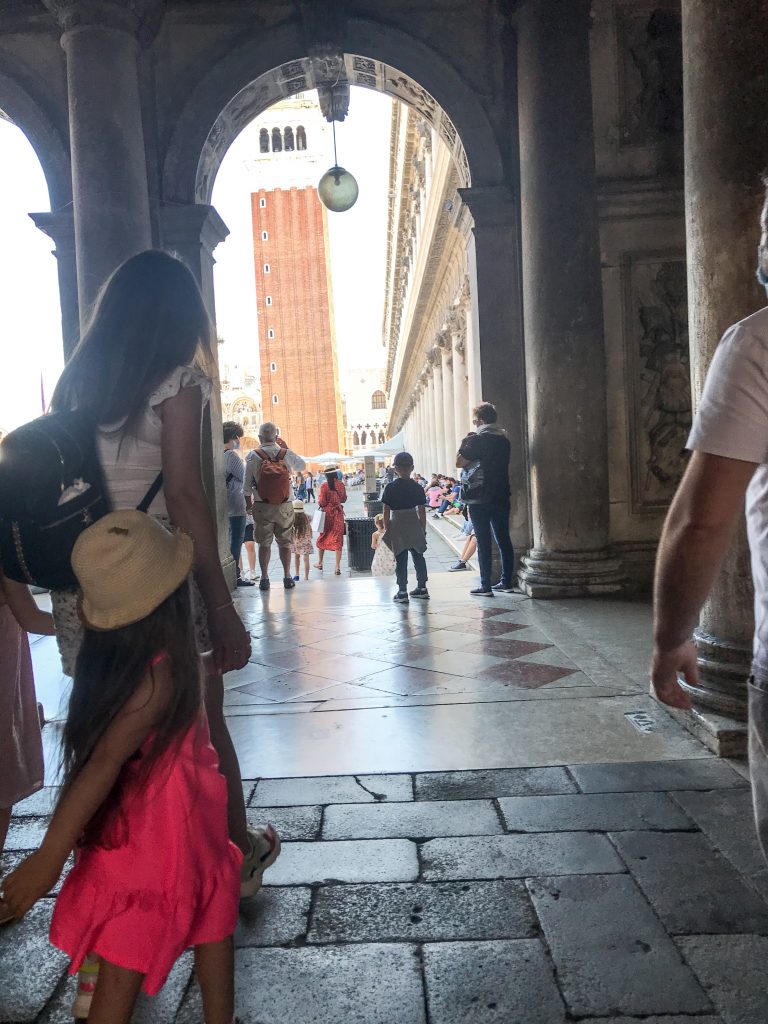
St Mark’s Square entrance, from Calle Vallessa 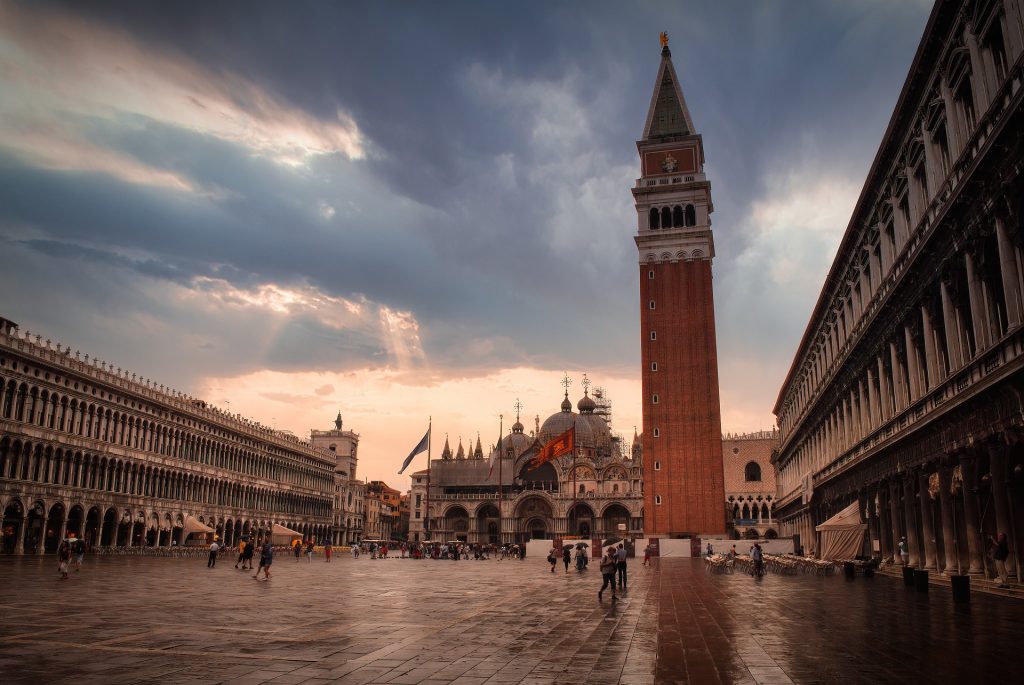
Venice, St Mark’s Square 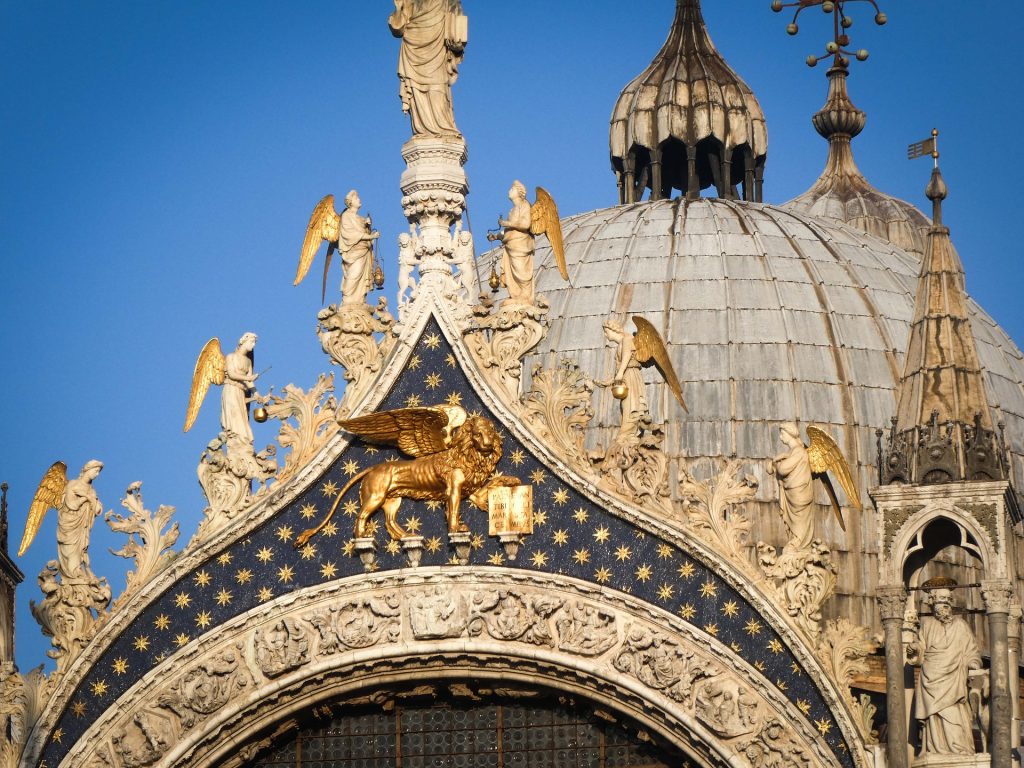
Venice, St Mark’s Square
The last three steps
On the other side of the square, you’ll find another café with a long history, established in 1775: Caffè Quadri, which rivals Caffè Florian in terms of history and beauty, as well as music. This café was also frequented by famous names such as Stendhal, Byron and Wagner, and it was a great opportunity for me to enjoy two monuments to the art of Italian hospitality, renowned worldwide for centuries.
To reach the square, you’ll have to go down 3 steps, each about 10 cm high. I chose those on the side opposite Caffè Florian, under the porticos of the Procuratie Nuove buildings, because the steps are longer, and there’s more room for manoeuvre. Those were the last three steps of the day!
On the other side of the square, we strolled along in front of St Mark’s Basilica and on to Riva degli Schiavoni, walking alongside the Doge’s Palace. Unfortunately, time was short and we were unable to explore the Palace, but I can assure you it’s well worth a visit: not only is it accessible, but it also offers workshops and experiences for visitors with a variety of disabilities. See Box. As you cross the Ponte della Paglia bridge (equipped with a long ramp, like all the bridges along Riva degli Schiavoni), it’s worth stopping to take a photo of the Bridge of Sighs, thus named because during the Serenissima Republic, the condemned had to cross it on their way to the prisons, with no idea of when they might see the outside world again.
Our trip continued on to the Giardini della Biennale gardens, where we were able to enjoy a beautiful display of sculptures and installations, and above all, some welcome fresh air in the shade of the trees. We then returned to Riva San Biasio, where – as we waited for the visit we’d booked for the Boat Show – we had the chance to admire a fabulous view over the Lagoon and the Island of San Giorgio Maggiore, as well as sampling some fine local produce at Wine Bar Agiò: cured meats, cheeses and the marvellous baccalà mantecato (creamed cod) with roasted polenta – the savoury snacks (known as cicchetti) that no visitor to Venetian bars should miss.
Building Bridges
Entry to the Boat Show area was rather complicated, because the ramp is very steep, but with the help of the staff on duty we made light work of it, and once inside it was very easy to get around. Worth a mention is the installation by the sculptor Lorenzo Quinn, formed by 6 pairs of hands joining to overcome differences and build a better world, describing the six universal values of humanity: Friendship, Faith, Help, Love, Hope and Wisdom. This is how Quinn described Building Bridges, the name of the work.
It didn’t take as long as we expected to get back to Venezia Santa Lucia station, so we were able to explore the surrounding area a little.
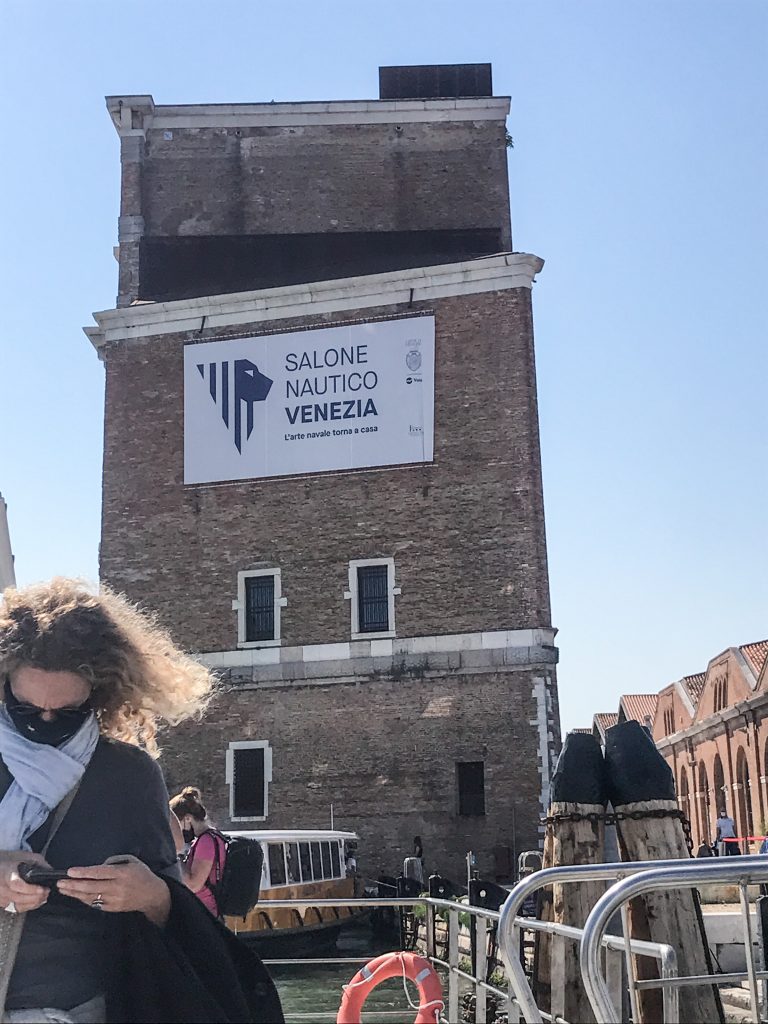
Leaving the Arsenal by Vaporetto to return to railway station Venice Santa Lucia 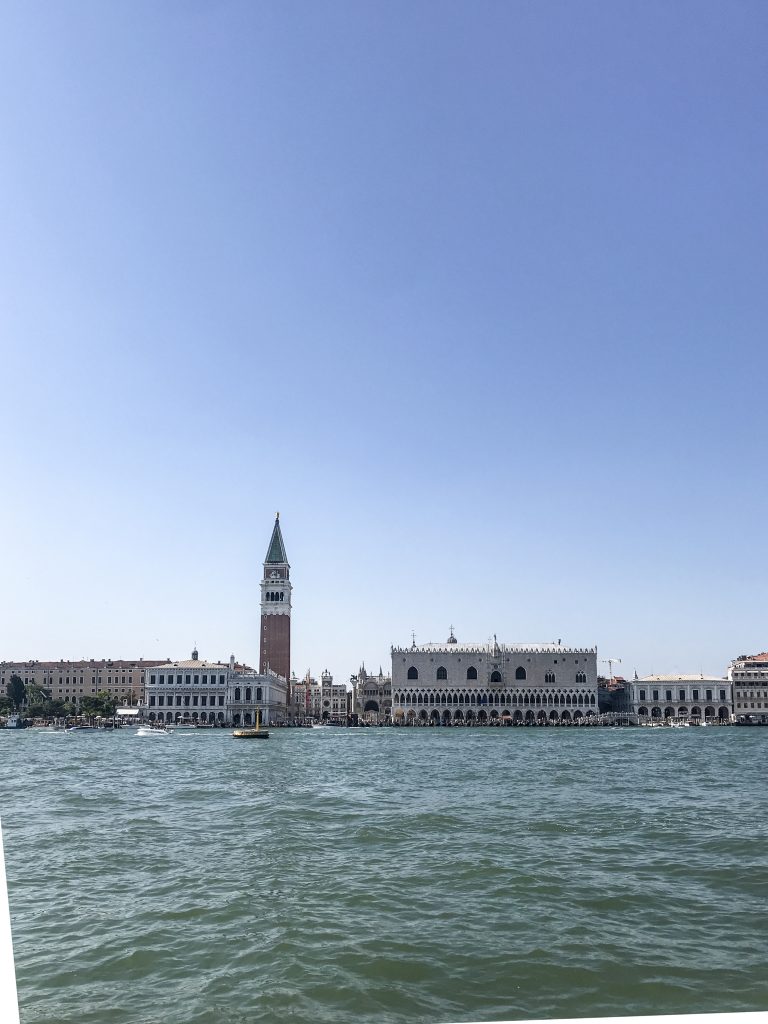
St Mark’s Square, taken from the Vaporetto
We took Rio Terà Santa Lucia to the Ponte delle Guglie bridge, where we turned left for Fondamenta Venier. This took us to another bridge, Ponte dei Tre Archi, where we turned left and wandered through some unknown calli (narrow Venetian streets) to Calle Priuli dei Cavalieri, where we came out alongside the station.
During this impromptu tour, I discovered a number of gardens, taverns and campi (as all the squares in Venice are known, apart from St Mark’s, Piazza San Marco) that made me want to come back again soon!
And they say Venice isn’t accessible!
Useful tips:
For help planning rail travel: Sala Blu Venice Office, Venezia Santa Lucia Station
Address: Fondamenta S. Lucia binario 14, Venice
e-mail: salablu.venezia@rfi.it
Website: https://www.rfi.it/en.html
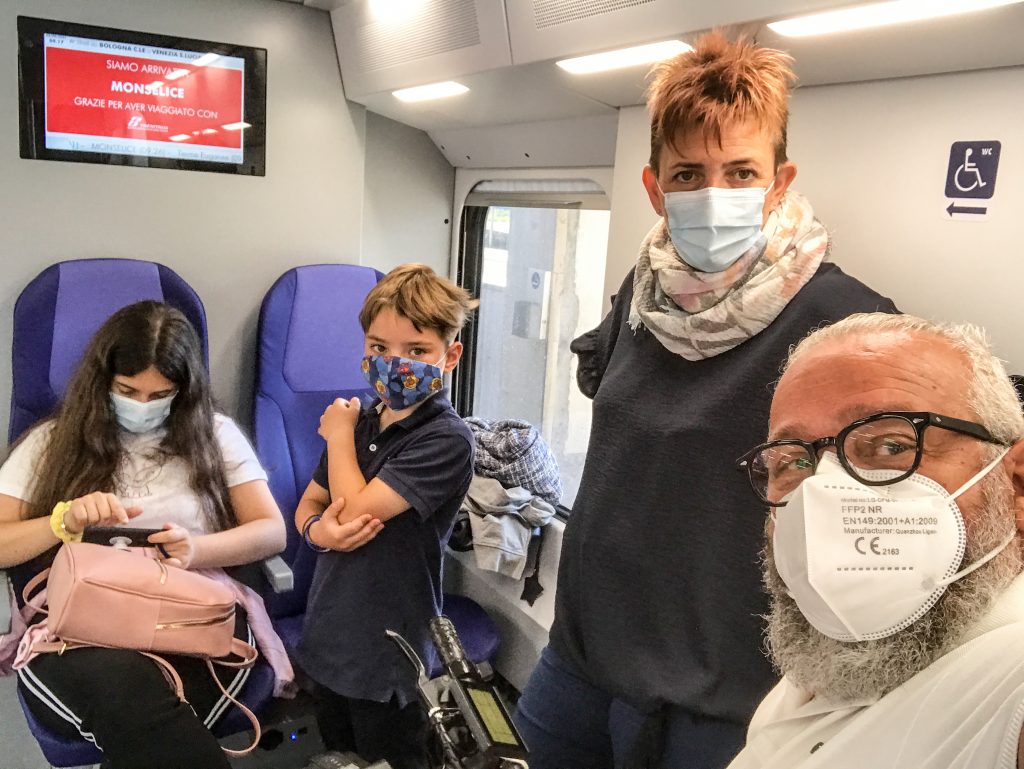
For the best way to plan your trip to Venice, I recommend this page of the Venice town council website. All the itineraries can be printed out, and you can download the PDF. The work is dated 2019, and since then ramps or more accessible steps have been installed on many of the bridges to make it easier to cross them with a wheelchair, walking frame or stroller, etc.
If you want to know where to find accessible public toilets, visit this website, or download the app.
Doge’s Palace: Click For more information on the accessibility of the Museum. Click to find out more about visitor routes and multi-sensory workshops.
Discover all the reductions for travelling around Venice here.
First stop, St Mark’s Square, one of the most beautiful in the world, where you can experience a truly unique atmosphere. Check the reductions available for parking for vehicles displaying the Blue Badge disabled parking permit. Click for specific information on the reductions contemplated.
If you’d like to organise a tour with guides who are also experts in accessibility and in working with visitors with disabilities, including sensory disabilities, BestVeniceGuides are particularly well trained and attentive to needs. You’ll find all their contact details here. For a list of structures belonging to the V4A Network in the Veneto Region, see here.
Roberto Vitali
ABOUT THE AUTHOR
Roberto Vitali is the life and soul of Village4All, founded to offer tourism opportunities for everyone, he has appeared in almost every issue of our Magazine so far. He writes an invaluable column for us, entitled “Accessible Travel”. This in no way means his articles are “special”, or different from any others that deal with tourist destinations. In this case, for example, Roberto offers us a wealth of historical and other information on a destination with numerous attractions: Ravenna. He simply adds some notes that should always be provided: accessibility criteria, which are valid for everyone. They’re useful for wheelchair users, for the visually impaired, or even just someone with a trolley to pull, or not as young as they used to be.

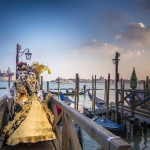

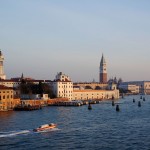











1 Comment
Venice Train Station Vaporetto Stop: Your Ultimate Guide -
[…] 1. Wheelchair Accessibility on Venice’s Vaporetto – Sage Traveling 2. Venice is accessible for everyone – Italia Slow Tour 3. Venice as a wheelchair user – Disabled Accessible […]